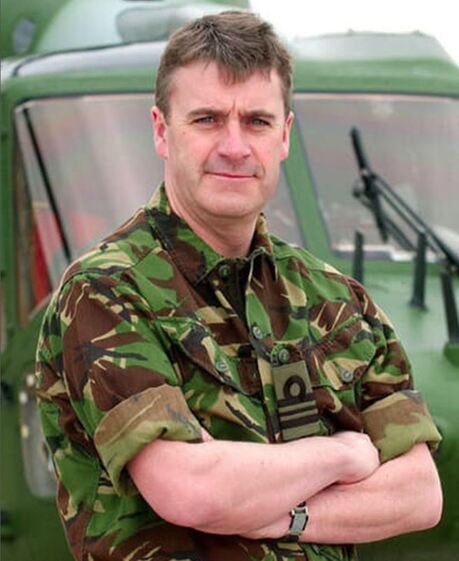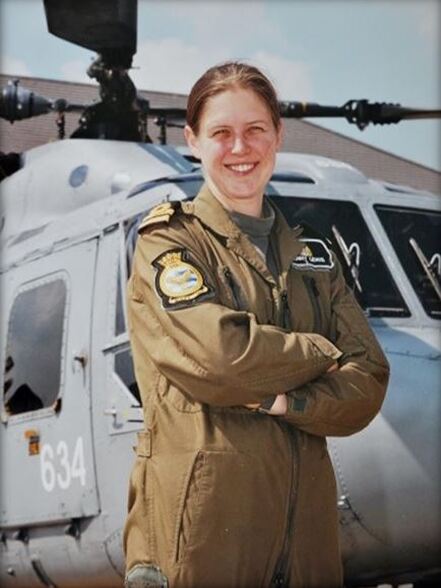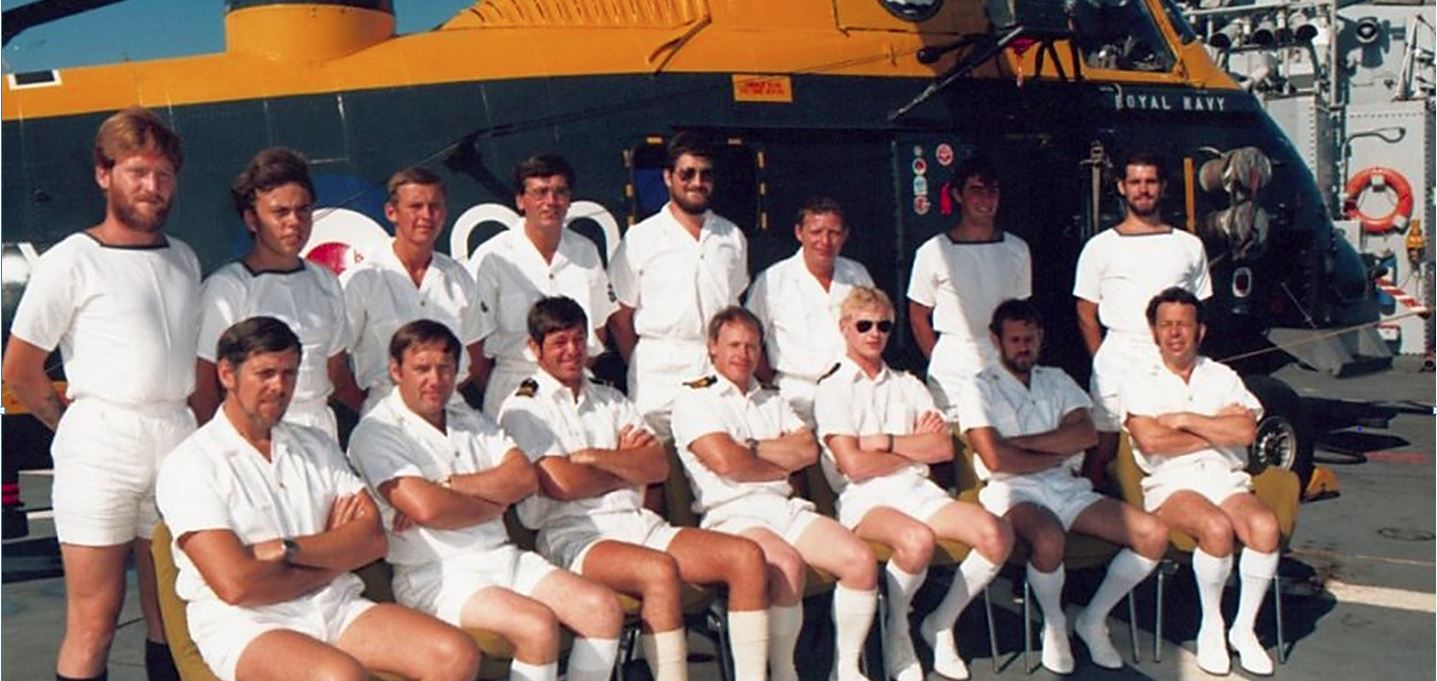Lieutenant Commander Darren Chapman Royal Navy
Originally from Burghclere, Hampshire
Died 6 May 2006, aged 40
Died 6 May 2006, aged 40
|
Darren Chapman worked his way up through the ranks of the Royal Navy from Able Seaman in 1983 to eventually command 847 Naval Air Squadron based at Royal Naval Air Station Yeovilton. He had extensive operational experience, serving as a Sea King pilot in the first 1991 Gulf campaign, on operations in the Balkans during the mid-1990s and returned to Iraq for Operation Telic in 2003. He was flying a Westland Lynx Mk7, Serial No. XZ614 assigned to the Joint Helicopter Force in Iraq, conducting a local area reconnaissance overhead Basra on Saturday 6 May 2006 when it exploded in mid-air and crashed onto the rooftop of a residential building in the centre of the city. Darren and all the occupants of the helicopter were killed including two other 847 squadron members; Captain David Dobson on loan from the Army Air Corps and Marine Paul Collins the Air Door Gunner. Following consideration of all the evidence, including witness statements and subject matter expert advice, the Board of Inquiry concluded that the main cause of the crash was a hostile Surface-to-Air Missile attack.
Darren’s funeral took place at the Fleet Air Arm Memorial Church and he was laid to rest at Saint Mary’s Church, Charlton Mackrell, Somerset where he lived with his family. |
Lieutenant Jenny Lewis Royal Navy
Originally from the Isle of Wight, Hampshire, Lived in Sherborne, Dorset
Died on 12 June 2002, Aged 25
Died on 12 June 2002, Aged 25
|
Jenny, an Observer, was the first female aircrew to die while serving in the Royal Navy. She lost her life alongside that of her colleague and pilot, Lieutenant Rod Skidmore. Also on board was Paul Hanson, a Petty Officer working as a photographer in the rear of the aircraft, who managed to escape. Their Westland Lynx Mk 8 helicopter, Serial Number XZ 256 from 815 Squadron based at Royal Naval Air Station Yeovilton, was operating from the Type 23 frigate HMS RICHMOND at the time of the accident. The aircraft was returning to the ship after a Sea Skua missile live firing exercise when it crashed into the Atlantic Ocean, approximately 200 miles off the coast of Virginia, USA.
The Lynx sank to a depth of 4,000 metres, as deep as the Titanic, coming to rest on the seabed. In a delicate and lengthy salvage operation, the helicopter was raised then carefully lifted onto the salvage ship and Lieutenant Skidmore's body removed. Sadly Jenny’s body was never found. Although Jenny has no grave she is remembered with honour on the Armed Forces Memorial at the National Arboretum, in the Fleet Air Arm Roll of Honour and on the headstone of Lieutenant Skidmore in the Royal Naval Cemetery, Yeovilton. There is also a D6515 diesel locomotive named in her memory. |
Lieutenant Commander Gordon Batt DSC Royal Navy
Originally from Worksop, Nottinghamshire
Died 23 May 1982, Age 37
Died 23 May 1982, Age 37
|
Gordon (‘Gordy’) Batt joined the Royal Navy as an Artificer Apprentice but was quickly selected for Officer Training and then for pilot training in 1970. After ‘gaining his wings’ on Sea King helicopters, Gordy joined 824 Squadron. He was then chosen from a small number of helicopter pilots to train on fast jets.
Gordy began a five year secondment to the Royal Air Force, initially for fixed wing training and later as an F-4M Phantom pilot. In February 1978 he spent two years on exchange with the United States Navy. Whilst there he saved an F-14 Tomcat after a dramatic low level engine failure and was presented with the US Secretary of State’s Commendation for Meritorious Services in the Air. On his return to the UK in 1980, Gordy began his Sea Harrier conversion course with 899 Squadron. In April 1982 Gordy deployed with the Falklands Task Force as part of the HMS HERMES Sea Harrier Air Group. He flew several important missions as strike leader, including the bombing attacks on Stanley airfield, Goose Green, and several Argentine shipping assets. On the night of 23 May Gordy launched in ZA192 from HMS HERMES with three other Sea Harriers to carry out a repeat attack on Stanley airfield. His aircraft was last off the deck but was then seen to explode ahead of the carrier. The cause of this accident which killed Gordy was never established. He was awarded the Distinguished Service Cross posthumously. |
HMS GLAMORGAN Flight
12 June 1982
Group photograph taken a few months before the Falklands conflict. Those highlighted perished on 12 June 1982.
Back row left to right: Brian Hinge, Andy Gibbs, George Lilley, Kelvin McCallum, John Humphrys, Michael Adcock, Unknown, Bernie Inglis
Front row left to right: Mo Morris, Dave Lee, Geoff Stevenson, Gerry Hunt, Mike De Winton, Ian Tate, John Kelly (survivor)
Back row left to right: Brian Hinge, Andy Gibbs, George Lilley, Kelvin McCallum, John Humphrys, Michael Adcock, Unknown, Bernie Inglis
Front row left to right: Mo Morris, Dave Lee, Geoff Stevenson, Gerry Hunt, Mike De Winton, Ian Tate, John Kelly (survivor)
On the morning of 12 June 1982, two days before the Argentinian surrender, at approximately 6:30am HMS GLAMORGAN was hit by a shore-launched Exocet missile whilst supporting 45 Commando Royal Marines with naval gunfire bombardments during their assault on the ‘Two Sisters’ Heights overlooking Port Stanley, Falkland Islands.
The missile struck HMS GLAMORGAN on the port side aft, exploding on impact, destroying the fully armed Wessex Mk III helicopter, severely damaging the hangar, and wrecking the main galley below. The ship stayed afloat but thirteen of the crew were killed instantly with a further fourteen injured, one fatally. Six of those who died were members of the ship’s flight from 737 Naval Air Squadron;
Petty Officer Engineering Mechanic (Electrical) Michael John Adcock
Air Engineering Mechanic (Mechanical) Mark Henderson
Air Engineering Mechanic (Radio) Brian Peter Hinge
Local Acting Chief Air Engineering Mechanician David Lee
Air Engineering Artificer (Mechanical) Kelvin Ian McCallum
Petty Officer Aircrewman Colin Paul Vickers.
The missile struck HMS GLAMORGAN on the port side aft, exploding on impact, destroying the fully armed Wessex Mk III helicopter, severely damaging the hangar, and wrecking the main galley below. The ship stayed afloat but thirteen of the crew were killed instantly with a further fourteen injured, one fatally. Six of those who died were members of the ship’s flight from 737 Naval Air Squadron;
Petty Officer Engineering Mechanic (Electrical) Michael John Adcock
Air Engineering Mechanic (Mechanical) Mark Henderson
Air Engineering Mechanic (Radio) Brian Peter Hinge
Local Acting Chief Air Engineering Mechanician David Lee
Air Engineering Artificer (Mechanical) Kelvin Ian McCallum
Petty Officer Aircrewman Colin Paul Vickers.






